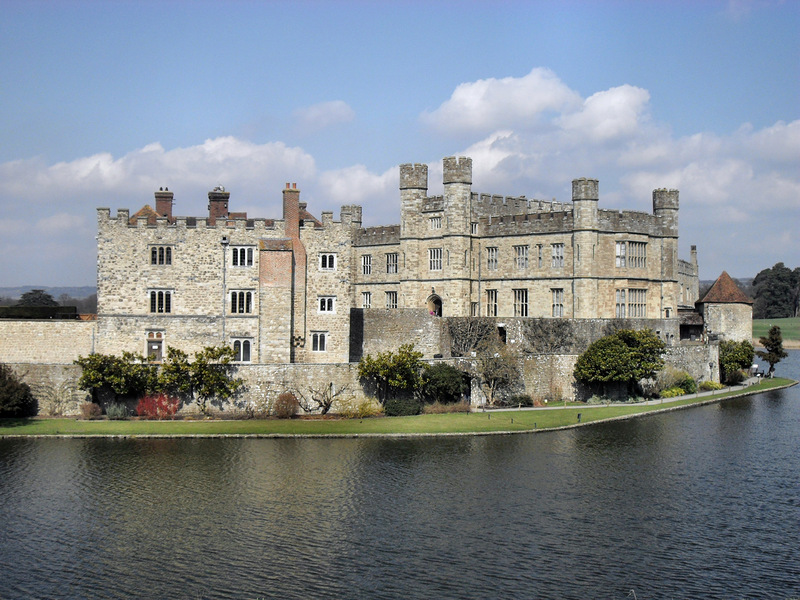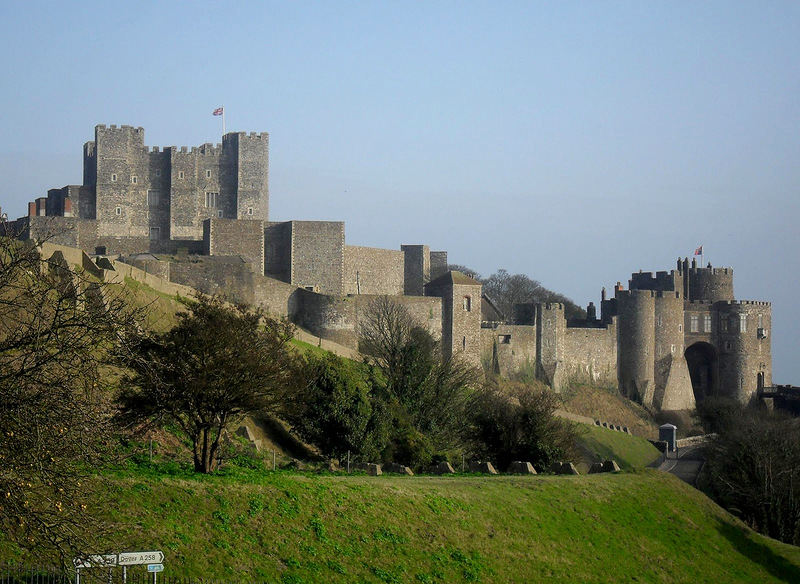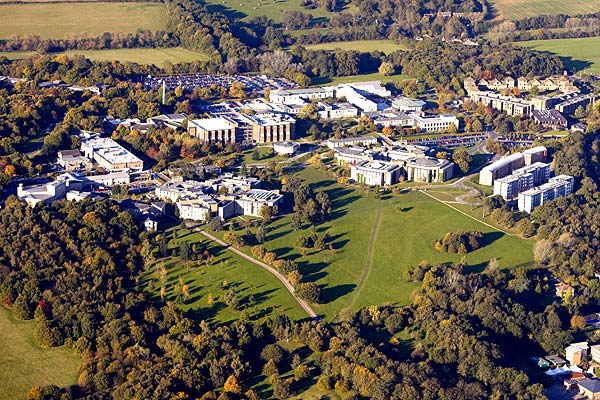"Sleeping" belt of London
As a historical territory, Kent is a non-metropolitan ceremonial county in the South East of England. Non-metropolitan (or historical) are called in the UK administrative units at the county level, many of them have the suffix "shire" in their names.
There are exactly 39 such territories in England.. The affairs of the ceremonial county are in charge of the lord, who is a viceroy appointed "from above". There are 48 ceremonial counties in Britain like Kent.
The territory of the county is, in fact, the "sleeping" zone of London. Together with the capital Maidstone, its entire population is 1634.5 thousand inhabitants, and the area of Kent is 3736 square meters. km. London itself, as well as East Sussex and Surrey, come close to it with their borders..
"Edge of Hellfire"
Access to the English Channel contributed to the fact that at all times Kent served as a kind of buffer between London and the territory of Europe. Here, as at the forefront, numerous military campaigns began and ended, including the encroachments of the Nazi hordes.
Apparently, therefore, the nickname "the land of Hellfire" was attached to East Kent for a long time.
For the past 800 years, British independence has been forged in the ports of Kent, where warships for the national navy have been manufactured. Of particular importance in this regard were the ports of Sinca (XII-XIV centuries) and the shipyard in Chatham (XVI-XX centuries).
The strategic component can be judged when, in clear weather, from the amazing beauty of Dover's White Cliffs of Kent, a view of the coast of France opens up.

Roman frontier and center of Christianity
The lands where the county was then founded were inhabited by people during the Paleolithic era. It is believed that people who lived during the Neolithic period on the Medway River built the famous megaliths.
The Darent Valley is famous for the ruins of Roman villas., and the discovery of a gold goblet at Ringmer confirms that during the Bronze Age, the Iron Age and the times of the occupation of Britain by the Romans, Kent was not empty.
This county takes its current name from the word "Cantus", the translation from the Breton language corresponds to the meaning of a frontier or border. In those days when the troops of Julius Caesar invaded here, this border passed along the eastern part of the territories that later became part of Kent.
The great commander gave him the name "Cantium", meaning the homeland of the Cantiats, that is, representatives of the tribe that lived here at that time.
In the west, the county was invaded by the Regnense tribes during the Iron Age, and in the 5th century the eastern lands were called the kingdom of the Jutes. The original name Kent originates in the British chronicles from 835.
During the early Middle Ages, local residents were called kantvara who chose Canterbury as their capital. The episcopate, which later became traditional, was established here in 597 by Pope Gregory I.
Augustine became his first appointee, and the history of the Bishops of Canterbury, who at all times of the existence of Great Britain played a significant role in public policy, went from him. The local diocese is still the national center of British Christianity..

"Invincible" Kent
Kent received his first historical baptism in the 11th century.. At this time, the territory of the county became a springboard for the invasion of troops led by William the Conqueror.
Despite the overwhelming advantage of the enemy, the locals put up the strongest resistance, inscribing the motto "Invicta" in the regalia of the county, which means "Invincible" in translation.
The Normans were forced to grant Kent the status of a partially independent palatinate. At the same time, powers corresponding to those regions that bordered Scotland and Wales were also received.
The several uprisings that made the county famous in the Middle Ages and later in its history confirmed its strategic importance.
The most significant of these were raised by Wat Tyler (1381), Jack Cade (1450) and Thomas Wyatt (1553). 1547 was the year of the first rafting of the British fleet on the Medway River. Elizabeth I contributed to the founding of shipbuilding in Chatham. At the beginning of the 17th century, along with warehouses, the buildings of a rope workshop, residential buildings for workers, as well as a dry dock were already flaunting here.
At the same time, England was on the verge of war with Holland and its permanent enemy in the person of France. Therefore, the county of Kent became a place of concentration of military formations. The Dutch raid on the Medway River, which caused serious damage to local shipyards, caused Britain to erect forts along the entire Kentish stretch of the English coast.
Citadel of the English fleet
The county entered the 18th century with the firm intention of the British rulers to establish a citadel of the English fleet here. It was then that the Medway River became an outpost of England, on which the main base of the fleet was located. Now it was a kind of springboard from which British squadrons of ships could quickly go to the Dutch and French shores.
Subsequently, in the 19th and 20th centuries, the Atlantic became the theater of the most active military operations, and Kent focused on strengthening and expanding the construction and repair base for the navy in every possible way.
Evidence of the military power of those years is the 1-inch map of the county that has survived to this day (1801), this was the first practical experience of the British Ordnance Survey. In those years, numerous buildings in the Georgian style were built on the territory of Kent, which have been preserved in various settlements of the county to this day.
The ensuing 19th century brought its own specifics to the local chronicle. These places were chosen by smugglers who specialized in transporting alcoholic beverages, tobacco and salt to England from France. The return flights delivered the famous English wool and other "scarce" goods in Europe to the continental coast.
By the end of the century, part of the cities went to the founded County of London (1889). And during the Second World War, the county shuddered from the battles of the air forces of England and Germany. In this regard, Kent became an obstacle not only to Nazi aircraft, but also to shells (including V1) sent from Northern France.
There were fortifications, consisting of anti-aircraft crews and barrages of balloons. Only one in four of the more than 10 thousand V1 shells fired by the enemy fell on London and Kent.

Peaceful times of the invincible county
In the post-war period, England began the disaggregation of individual urban areas. So Bromley and Bexley appeared on the map of the county, which then went to London. But Rochester, Chatham and other large centers entered the unitary district of Medway, remaining under the jurisdiction of Kent.
The British often refer to Kent as the "Garden of England". And not by chance! After all, there are numerous orchards and plantations of hops. The countryside abounds with hop dryers. Closer to the British capital, England is more like one huge garden.
With the flourishing of tourism and other promising sectors of the economy, agriculture in Kent has significantly decreased in production. The service sector is increasingly replacing the agro-industrial complex.
North Kent is the building industry (cement, brick, shipbuilding) and also includes the paper and chemical industries. The locals are especially proud of the roads, which were founded by the ancient Romans. There are several seaports.

This county is also famous for the fact that it was here that the first railway in Britain was built, along which passengers were transported using locomotive traction. Its heir, among others, was a modern railway, serving exclusively tourists.
There are two airports in the county - local and international (Lydd and Kent, respectively). In those universities (Canterbury, Kent and Greenwich) many of the graduates of 38 local grammar lyceums study.

From ancient times to the present day, Kent has been an inspiration for creative people. Writers and artists, poets and musicians dedicated many of their imperishable opuses to him.
Local studio Xenomania has been instrumental in the success of girl band Girls Aloud, and Gillingham Football Club has a county following.
